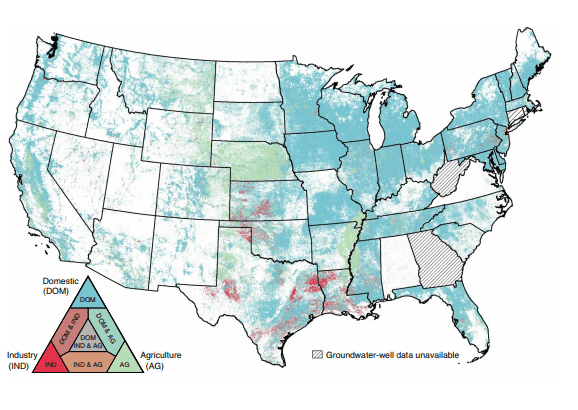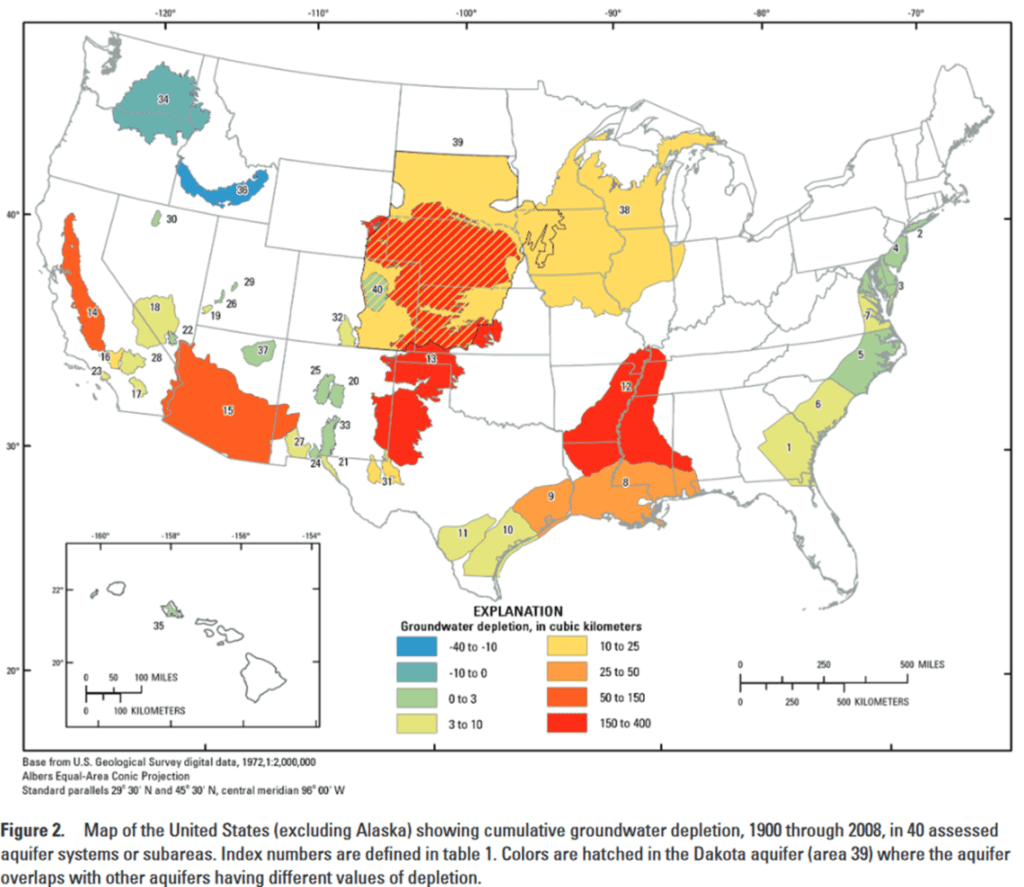Current water usage trends in the US are unsustainable, a new analysis suggests, and digging deeper wells isn’t going to solve the problem.

Groundwater wells across the United States. Each point on the map represents the recorded location of a well. The colors represent the purpose of the well: blue for wells constructed for domestic or municipal supply, green dots for agriculture and red dots for industry. Image credits: Perrone and Jasechko / Nature.
Ensuring water access for the planet’s inhabitants is one of the key challenges of this century, and it’s one which we’re not dealing with very well. Currently, 844 million people on the planet (around 1 in 9 globally) lack access to clean, affordable water.
It’s not just remote or underdeveloped areas (Brazil’s Sao Paulo is nearly running out of water and California’s water resources are also drying up) and it’s not just the water that we drink or wash with — every product we use contains some “embedded water”. For instance, it takes around 20,000 pounds of water to produce one pound of beef and around 6,000 pounds to produce a t-shirt. We’re using an immense amount of water, treating it as an infinite resource — when that’s really not the case. While technically renewable, there is a finite amount of drinkable water on Earth, and more importantly, only some of that is practically accessible.
Groundwater plays a crucial role in water availability. The water stored in the ground can be compared to money kept in a bank account. If you withdraw more than you produce, you’ll end up with shortages, and this is exactly what’s going on now in many parts of the world — including the US.
“Groundwater pumped from wells in the United States provides drinking water to about 120 million Americans, supplies nearly half of all irrigation by volume, and supports industrial activities,” researchers write in a new study.
“Although groundwater is critical to domestic, agricultural and industrial activities, current withdrawals from some aquifers are unsustainable.”
Groundwater wells tap into aquifers all across the US. They vary greatly in size and capacity. Debra Perrone and Scott Jasechko compiled the first national database of groundwater wells, pulling together state-level data on nearly 12 million wells across the US. Their findings are concerning.
For instance, they found that as much as 89% of drilling sites in California’s Central Valley aquifer system and 73% in the Mississippi embayment aquifer system show signs of declining groundwater levels. They specifically looked at how deep water wells are being built compared to the past, the reasoning being that when groundwater levels are declining, people would dig deeper wells.
“We show that typical wells are being constructed deeper 1.4 to 9.2 times more often than they are being constructed shallower,” the researchers write. “Well deepening is not ubiquitous in all areas where groundwater levels are declining, implying that shallow wells are vulnerable to running dry should groundwater depletion continue.”
Many parts of the US are no strangers to water shortages. This issue can be bypassed temporarily by drilling deeper wells. However, drilling deeper groundwater wells is an unsustainable stopgap measure and only delays the problem without solving it, researchers find.

Areas with deeper wells are largely correlated with groundwater depletion. Image credits: Perrone and Jasechko / Nature.
This depletion of groundwater can produce a cascade of negative effects, ranging from drying of wells and reduction of water in streams and lakes to land subsidence and an overall decrease of the water quality within the aquifer. This study aims to serve as a tool for a sustainable policy to guide and protect groundwater usage.
There is a limitation to this study, particularly when it comes to the groundwater use uncertainty. Nationwide, water-use estimates are produced every 5 years. This analysis used data available at the county level, which varies spatially and seasonally. Thus, data may be of higher quality in some parts and of lower quality in other parts. Even so, this is one of the most detailed studies of its kind and paints a more detailed picture than ever before.
The study was published in Nature Sustainability.










